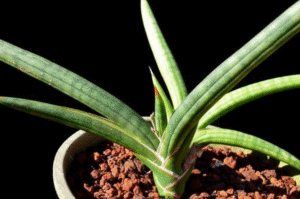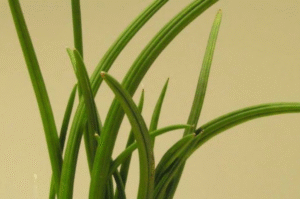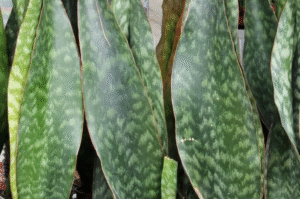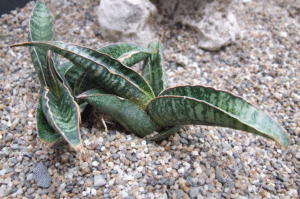Sansevieria trifasciata ‘Twisted Sister’ is a true standout in the world of houseplants. With its bold yellow variegation, tightly curled leaves, and compact rosette form, this snake plant variety isn’t just low-maintenance, it’s a conversation starter. Whether you’re a seasoned plant parent or just beginning your indoor gardening journey, the Twisted Sister offers visual flair with minimal fuss.
In this detailed guide, we’ll cover everything you need to know about planting, growing, and caring for Sansevieria ‘Twisted Sister’, so your little green buddy stays vibrant and healthy year-round.
Quick Facts About Sansevieria ‘Twisted Sister’
| Feature | Description |
| Common Name | Twisted Sister Snake Plant |
| Botanical Name | Sansevieria trifasciata ‘Twisted Sister’ |
| Family | Asparagaceae |
| Plant Type | Perennial, succulent, indoor houseplant |
| Light Requirements | Bright, indirect light (tolerates low light) |
| Watering Frequency | Low – every 2–3 weeks, depending on season |
| Soil Type | Well-draining succulent/cactus mix |
| Mature Height | 10–15 inches |
| Air Purification | Yes – NASA-approved for air filtering |
| Toxicity | Toxic to pets if ingested |
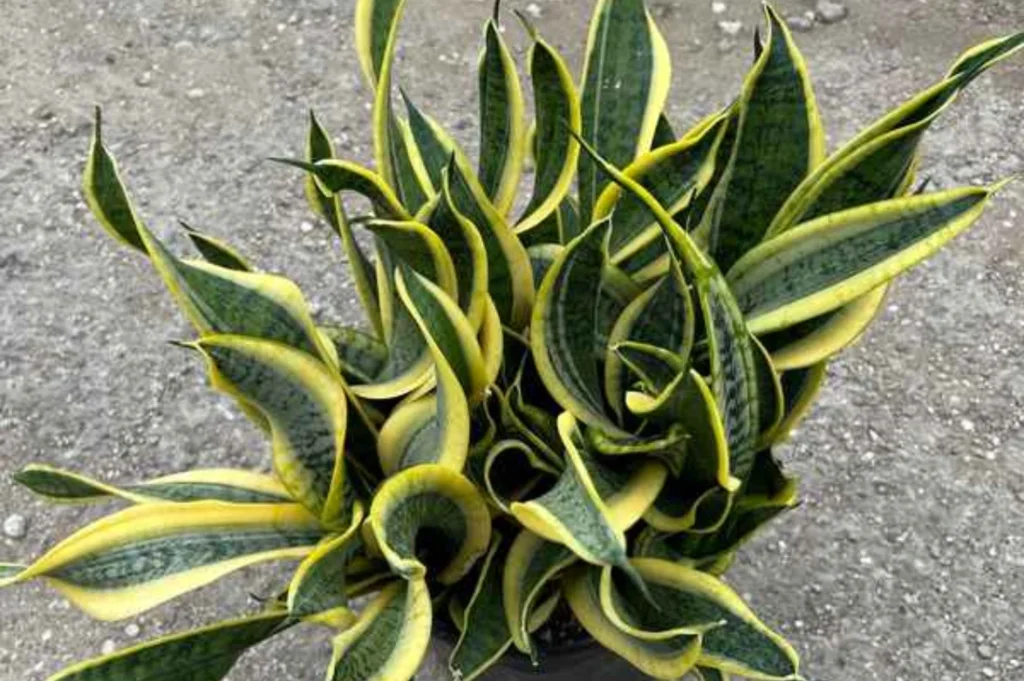
Why Choose Sansevieria ‘Twisted Sister’?
If you love compact plants with bold character, the Twisted Sister is a must-have. Its tightly spiraled green leaves with golden-yellow margins make it look like a miniature sculpture. This dwarf cultivar is ideal for desks, shelves, or countertops — anywhere you want an eye-catching piece of living décor.
What sets it apart is its resilience. Like other snake plants, Twisted Sister thrives on neglect and can adapt to a variety of indoor environments. Whether you’re forgetful about watering or your home doesn’t get much sunlight, this plant can handle it all.
How to Plant Sansevieria ‘Twisted Sister’
1. Choose the Right Pot
The Twisted Sister has a compact root system, but it’s important to pick a pot with drainage holes. Avoid decorative pots without drainage unless you’re using them as cache pots.
Recommended: Use a 4–6 inch terracotta or ceramic pot with bottom holes.
2. Use Well-Draining Soil
Snake plants are prone to root rot if overwatered. That’s why the soil must drain quickly. A cactus or succulent mix works perfectly. You can also make your mix using:
- 2 parts potting soil
- 1 part perlite or pumice
- 1 part sand
3. Planting Steps
- Add a layer of gravel or pebbles at the bottom of the pot for added drainage.
- Fill the pot halfway with soil.
- Gently place the Twisted Sister in the center.
- Fill around the roots with more soil, firming it slightly.
- Water lightly to settle the soil.
Growing Conditions for Optimal Health
1. Light Requirements
Twisted Sister thrives in bright, indirect sunlight. It can tolerate low light, but growth will be slower and colors less vibrant.
Avoid: Direct sun for extended periods, as it can scorch the leaves.
Best Placement: East or north-facing window, or under LED grow lights if your space lacks natural light.
2. Watering Schedule
This snake plant variety loves to dry out between waterings. Water only when the top 2 inches of soil are dry.
Seasonal Care:
- Spring & Summer: Every 10–14 days
- Fall & Winter: Every 3–4 weeks
Warning: Overwatering is the #1 killer of Sansevierias.
3. Temperature & Humidity
The Twisted Sister prefers warm indoor climates.
- Ideal Temperature: 65°F – 85°F (18°C – 29°C)
- Avoid: Temperatures below 50°F (10°C)
- Humidity: Average room humidity (30–50%) is sufficient
If your home is especially dry, occasional misting or a pebble tray can help, but it’s not essential.
How to Fertilize Sansevieria ‘Twisted Sister’
Feed your plant once every 4–6 weeks during the growing season (spring and summer) with a diluted succulent fertilizer. Choose a balanced liquid fertilizer (like 10-10-10 or 20-20-20) at half strength.
Do not fertilize during the winter months, it’s a time for rest and minimal growth.
Pruning and Maintenance
Pruning is rarely needed, but you can trim dead or damaged leaves at the base using clean, sharp scissors or pruning shears.
General Maintenance Tips:
- Wipe leaves occasionally with a damp cloth to remove dust.
- Rotate the plant every few weeks to ensure even growth.
- Watch for pests like spider mites or mealybugs — although rare, they can appear in very dry conditions.
Repotting Guide
Twisted Sister is a slow grower, so repotting is only needed every 2–3 years or when roots start to push out of the pot.
Best Time to Repot: Early spring
Steps:
- Gently remove the plant from the current pot.
- Shake off excess soil and inspect roots.
- Choose a pot 1–2 inches larger in diameter.
- Follow the original planting instructions.
Propagation Methods
If you want to expand your collection or gift a plant to a friend, propagation is easy.
1. Division Method (Preferred)
- Remove the plant from the pot.
- Separate the root ball into sections, ensuring each part has leaves and roots.
- Replant each section in its pot.
2. Leaf Cutting (Slower)
- Cut a healthy leaf into 3–4 inch sections.
- Let the cuttings callous over for 24–48 hours.
- Plant them upright in moist cactus soil.
- Be patient, roots can take several weeks to form.
Common Problems and How to Fix Them
| Problem | Cause | Solution |
| Yellowing leaves | Overwatering | Reduce watering, check for root rot |
| Wrinkled or droopy leaves | Underwatering | Water thoroughly when soil is dry |
| Brown leaf tips | Low humidity or cold drafts | Move plant to a warmer, more stable spot |
| Stunted growth | Low light or no feeding | Increase light exposure, fertilize |
Is Sansevieria ‘Twisted Sister’ Pet Friendly?
Unfortunately, like most snake plants, Twisted Sister is toxic to cats and dogs if ingested. It can cause nausea, vomiting, and drooling.
Tip: Keep it out of reach or place it in pet-free areas of your home.
Conclusion :
Absolutely. Sansevieria trifasciata ‘Twisted Sister’ is the perfect mix of visual charm and no-fuss care. It fits beautifully into compact spaces, helps purify indoor air, and brings a bold splash of color to your home.
Whether you’re looking to add a stylish piece to your plant shelf or need a durable plant for a low-light office, this snake plant has you covered.



